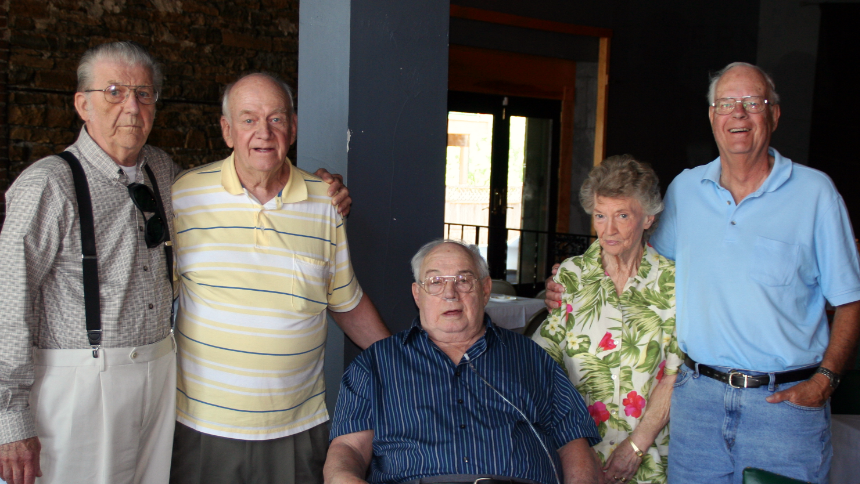My aunt Kate Miller died on September 17 at age 88. Though I can’t say I was close to her, her experiences serve as part of an important lesson for my law students every year.
Circumstances kept my nuclear family far away from the rest of my parents’ large families while I was growing up. “Katie,” as I knew her, was in my father’s high-school class and married my father’s brother Merlyn Larson in 1958. In my early days, I was likely to see her only at family holiday gatherings. I rarely saw her children, except the eldest, my cousin Marilyn, who seemed to me to be very grown up and a favorite of my parents.
Fast forward to summer 1996. I was readying myself for my first semester of law school, and I received a packet from school in the mail (yes, we did things in paper in those days) that included greetings, student policies, and a court opinion that we were supposed to read before orientation week. The packet informed me that we would discuss the case Ronnigen v. Hertogs, 199 N.W.2d 420 (Minn. 1972), to familiarize ourselves with the basics of briefing cases and to serve as a foundation for our first fall legal-writing problem.
I read Justice Rogosheske’s opinion, but I was not prepared for the shock when I reached the third paragraph:
Briefly . . . plaintiff’s semitractor and trailer loaded with livestock was destroyed on May 22, 1964, when Merlyn W. Larson, his driver-employee, was unable to negotiate a turn where the township roads of Pine Island and New Haven townships form a T-intersection. The vehicle left the roadway, broke off a utility pole, and overturned, causing not only plaintiff’s loss but also Mr. Larson’s death. Mrs. Larson, as trustee represented by defendant at trial, recovered damages for her husband’s death against Pine Island township upon findings, which we affirmed, that the township was negligent in failing to post proper highway warning signs and that decedent, her husband, was free of contributory negligence.
I understood that the Ronnigen case was about whether Ronnigen, the truck and livestock owner, had an attorney-client relationship with, and possibly a malpractice claim against, attorney Hertogs. But it was hard to think about that when reading about a story that was legendary in our family.
Uncle “Merly,” as the family called him, had died in this accident, leaving Katie with five children, and one more on the way. We all heard of the challenges that Katie faced raising six children by herself for fifteen years during the 60s and 70s. The damages that she recovered against the negligent township were $25,000 in 1969, about $190,000 in 2021 dollars and not enough to make up for the loss of husband and father. (Her attorneys no doubt received a considerable share of that, too, after the appeal of her case.) So I suppose that my cousin Marilyn had always seemed like my most grown-up cousin in part because she had to be, as their lives were forever changed by these events. But Justice Rogosheske recounted them in such a matter-of-fact way that I was quite distressed.
Now, every fall in my first-semester legal-writing class, I have my students read Ronnigen, along with two other cases we use to analyze whether our hypothetical client formed an attorney-client relationship during a conversation at a party. (You can see some of how I use this in my draft open-access textbook.) The problem allows us to learn about rule synthesis and analogizing cases.
But I also stop to tell students the story in this blog post, to remind them that there are always human beings behind the court opinions we read. Even the opinions involving only corporate parties are before us because of the decisions and stories of individual human beings. I challenge them—as I continue to challenge myself—to keep the richness and particularity of the human lives of folks like Katie and Merly Larson in our minds at the same time that we abstract away to generic terms, like “decedent,” “trustee,” “plaintiff,” and “defendant,” when using these cases in our analysis and writing.
Later in my life, as our families tended to gather mostly for funerals, that was where I was most likely to see Kate. But I was happy to see her in 2012 at the celebration of my parents’ 50th wedding anniversary. The picture above shows her there with my father (seated, also deceased since 2016) and other high school classmates.
My parents always felt a particular warmth for Katie, and as far as I can tell, she deserved it well. Rest in peace, Aunt Kate.
-Brian


1 thought on “What my 88-year-old aunt can help teach my law students”